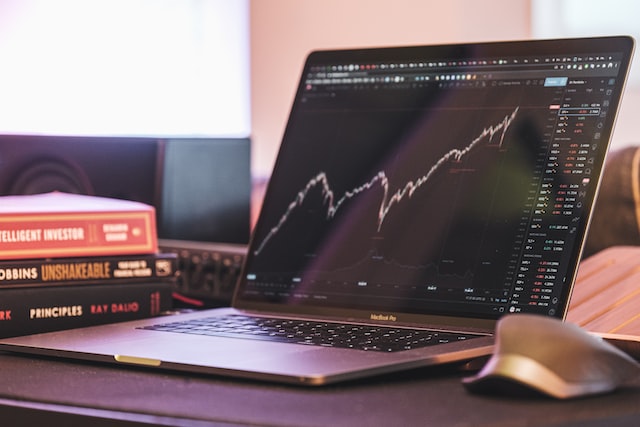
The FREL exchange-traded funds holds stocks of both U.S. companies and foreign listed companies. Its holdings are sorted by random order. The weights for individual stocks are not calculated so it is possible to not find the exact stocks that belong to the fund. However, it is worth noting that the beta of FREL indicates that it has been less risky than the market as a whole.
The beta score of FREL shows that it is less risky to invest than the market
Its beta is 1.6. This implies that it should rise by 1.87% over the next 12 months. But, this beta value is actually twice what it would suggest. This means that FREL has been less volatile than the market for the past one year. Investors will appreciate this. The stock is also not volatile so it isn't a good idea for investors to buy it and keep it.
The beta of this fund is less risky then the market's. It has also experienced fewer volatility swings the past 12 months. FREL's holdings consist of retail, hotel, and industrial REITs. These types of realty tend to be less volatile that other markets, but a beta of 1.4% indicates that FREL's volatility is lower than the market.

It pays a dividend yield in excess of 2.699%
In many cases, a high dividend yield can be desirable. But what makes a stock more attractive than others? Dividend yields are calculated based on the most recent full-year's financial report. If the company has just published its annual report, the dividend yield will still be acceptable. However, it becomes less relevant the further time passes since that report was issued. To calculate trailing dividends, investors can add the last four quarters of dividends to get a trailing twelve-month dividend number. If dividends have been cut or raised recently, trailing dividend number can be used.
It may be U.S.-listed stock
The FREL ETF may contain stocks U.S.-listed. This ETF tracks US real-estate companies' cap weights. It can hold both public and private REITs. FREL may include non-REIT real estate firms. It is taxed as ordinary income. Investors may want to invest in other types if they are not interested in investing on the U.S.-listed Stock Market.
Frel ETFs might contain U.S. stocks, which may concern some investors. However, it is important to understand that the U.S. Securities and Exchange Commission allows non-U.S. funds to own up to 3% of a U.S. registered fund's voting stock. To avoid any such situation, investors should be cautious when investing in an ETF.
It might also own industrial REITs
REITs, or real estate investment trusts, are pools of money that are generated from the sale of real property. These companies acquire industrial spaces and buildings, and then receive a portion from leases. There are several types. Each has its advantages and drawbacks. While office REITs typically focus on office buildings and industrial REITs on manufacturing, distribution, or warehouse properties, industrial REITs can be found in a variety of industries. These REITs are able to rent out industrial companies and other businesses their properties and earn an income.

While Industrial REITs may be classified by their use, one advantage to investing in one is the flexibility. Industrial properties have the flexibility to be managed, regardless of whether they are used as storage space or distribution centers. Industrial REITs might offer more flexibility than other types of REITs. Industrial properties might be near transport routes which could make them more lucrative.
FAQ
How can I invest in stock market?
Brokers allow you to buy or sell securities. Brokers can buy or sell securities on your behalf. When you trade securities, you pay brokerage commissions.
Banks typically charge higher fees for brokers. Because they don't make money selling securities, banks often offer higher rates.
A bank account or broker is required to open an account if you are interested in investing in stocks.
If you hire a broker, they will inform you about the costs of buying or selling securities. This fee is based upon the size of each transaction.
Ask your broker questions about:
-
Minimum amount required to open a trading account
-
What additional fees might apply if your position is closed before expiration?
-
What happens to you if more than $5,000 is lost in one day
-
How many days can you keep positions open without having to pay taxes?
-
How you can borrow against a portfolio
-
Transfer funds between accounts
-
How long it takes to settle transactions
-
The best way buy or sell securities
-
How to Avoid fraud
-
How to get assistance if you are in need
-
Whether you can trade at any time
-
How to report trades to government
-
If you have to file reports with SEC
-
What records are required for transactions
-
Whether you are required by the SEC to register
-
What is registration?
-
How does it affect me?
-
Who needs to be registered?
-
When should I register?
What is the distinction between marketable and not-marketable securities
The main differences are that non-marketable securities have less liquidity, lower trading volumes, and higher transaction costs. Marketable securities on the other side are traded on exchanges so they have greater liquidity as well as trading volume. Because they trade 24/7, they offer better price discovery and liquidity. This rule is not perfect. There are however many exceptions. For instance, mutual funds may not be traded on public markets because they are only accessible to institutional investors.
Non-marketable security tend to be more risky then marketable. They are generally lower yielding and require higher initial capital deposits. Marketable securities are generally safer and easier to deal with than non-marketable ones.
For example, a bond issued in large numbers is more likely to be repaid than a bond issued in small quantities. Because the former has a stronger balance sheet than the latter, the chances of the latter being repaid are higher.
Because they are able to earn greater portfolio returns, investment firms prefer to hold marketable security.
Why are marketable securities important?
The main purpose of an investment company is to provide investors with income from investments. It does this by investing its assets into various financial instruments like stocks, bonds, or other securities. These securities are attractive because they have certain attributes that make them appealing to investors. They are considered safe because they are backed 100% by the issuer's faith and credit, they pay dividends or interest, offer growth potential, or they have tax advantages.
The most important characteristic of any security is whether it is considered to be "marketable." This refers to the ease with which the security is traded on the stock market. A broker charges a commission to purchase securities that are not marketable. Securities cannot be purchased and sold free of charge.
Marketable securities are government and corporate bonds, preferred stock, common stocks and convertible debentures.
These securities are preferred by investment companies as they offer higher returns than more risky securities such as equities (shares).
How do I choose a good investment company?
Look for one that charges competitive fees, offers high-quality management and has a diverse portfolio. Fees are typically charged based on the type of security held in your account. Some companies have no charges for holding cash. Others charge a flat fee each year, regardless how much you deposit. Others charge a percentage based on your total assets.
You should also find out what kind of performance history they have. You might not choose a company with a poor track-record. You want to avoid companies with low net asset value (NAV) and those with very volatile NAVs.
Finally, it is important to review their investment philosophy. An investment company should be willing to take risks in order to achieve higher returns. If they're unwilling to take these risks, they might not be capable of meeting your expectations.
Statistics
- US resident who opens a new IBKR Pro individual or joint account receives a 0.25% rate reduction on margin loans. (nerdwallet.com)
- Even if you find talent for trading stocks, allocating more than 10% of your portfolio to an individual stock can expose your savings to too much volatility. (nerdwallet.com)
- Our focus on Main Street investors reflects the fact that American households own $38 trillion worth of equities, more than 59 percent of the U.S. equity market either directly or indirectly through mutual funds, retirement accounts, and other investments. (sec.gov)
- "If all of your money's in one stock, you could potentially lose 50% of it overnight," Moore says. (nerdwallet.com)
External Links
How To
How to Invest in Stock Market Online
Stock investing is one way to make money on the stock market. There are many methods to invest in stocks. These include mutual funds or exchange-traded fund (ETFs), hedge money, and others. The best investment strategy depends on your investment goals, risk tolerance, personal investment style, overall market knowledge, and financial goals.
You must first understand the workings of the stock market to be successful. Understanding the market and its potential rewards is essential. Once you know what you want out of your investment portfolio, then you can start looking at which type of investment would work best for you.
There are three main categories of investments: equity, fixed income, and alternatives. Equity is ownership shares in companies. Fixed income is debt instruments like bonds or treasury bills. Alternatives include things like commodities, currencies, real estate, private equity, and venture capital. Each category comes with its own pros, and you have to choose which one you like best.
You have two options once you decide what type of investment is right for you. One is called "buy and hold." You buy some amount of the security, and you don't sell any of it until you retire or die. Diversification, on the other hand, involves diversifying your portfolio by buying securities of different classes. If you buy 10% each of Apple, Microsoft and General Motors, then you can diversify into three different industries. The best way to get exposure to all sectors of an economy is by purchasing multiple investments. It helps protect against losses in one sector because you still own something else in another sector.
Another key factor when choosing an investment is risk management. Risk management can help you control volatility in your portfolio. If you were only willing to take on a 1% risk, you could choose a low-risk fund. If you are willing and able to accept a 5%-risk, you can choose a more risky fund.
Learning how to manage your money is the final step towards becoming a successful investor. The final step in becoming a successful investor is to learn how to manage your money. Your short-term, medium-term, and long-term goals should all be covered in a good plan. This plan should be adhered to! Keep your eyes on the big picture and don't let the market fluctuations keep you from sticking to it. Your wealth will grow if you stick to your plan.